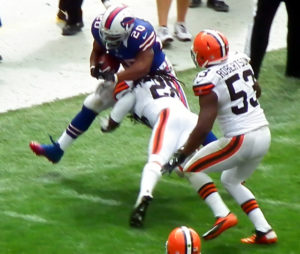
From 2001 to 2012, the rate of emergency department visits for sports and recreation related traumatic brain injuries (TBIs) more than doubled in children. In 2012, over 329,000 children and adolescents in the US have received medical treatment for TBI. This statistic becomes more troubling when we consider a significant number of individuals likely do not seek medical services. TBIs are clearly a public health concern and have captured the attention of the public, media, sports community, and medical healthcare professionals.

Secondary to this attention, an increasing amount of literature examining the lingering effects of previous concussion(s) now exists; however, this literature frequently demonstrates mixed results. Unfortunately, the existing research also frequently contains insufficient sample sizes, lack of stringent inclusion/exclusion criteria, absence of case matching, and/or mixing of sexes in the groups examined. In our recent study, we attempted to address these limitations by utilizing a large sample database of over 26,000 athletes aged 10 to 19 years, extensive inclusion and exclusion criteria, and a case match design. Participants were grouped according to sex and number of previous self-reported concussions and then case matched on age, sex, and body mass index (BMI).
A one-way analysis of variance was used to examine overall differences between concussion groups on symptoms reported and scores obtained on the Immediate Post-Concussion Assessment and Cognitive Testing (ImPACT ®) neurocognitive battery composites. A between-subjects main effect was not found for any of the neurocognitive profiles (e.g., verbal memory, visual memory, and reaction time) for males or females; however, results demonstrated male participants reported significantly increased symptoms of dizziness, fogginess, concentration difficulties, and memory problems as the number of self-reported previous concussions increased. A similar trend was not found for female participants.

Despite this, our finding that male adolescents with a self-reported history of concussions are suffering from greater daily discomfort than their non-concussed peers is a cause for concern. While it is not clear why a similar trend was not observed in females, several possible explanations exist, including: male athletes are known to underreport symptoms and are less likely to be diagnosed with a concussion unless relatively severe or higher number of symptoms are present; males endorsing more symptoms may also be more likely to connect their experiences to a higher number of past concussions; males are more likely to engage in sports associated with increased violent and aggressive acts (e.g., football and wrestling); and previous research suggesting estrogen and progesterone are neuroprotective and may aid in recovery post-concussion (Roof, Duvdevani, Braswell, & Stein, 1994; Stein & Hoffman, 2003). Additionally, our findings appear to contradict a significant portion of the existing literature that did not utilize stringent inclusion and exclusionary criteria, had insufficient sample sizes, and mixed sexes in the groups examined. Consequently, it becomes more likely that these studies’ findings may at least be partially explained by confounding variables (e.g., differences among males and female participants as well as psychiatric diagnoses affecting symptoms reported and neurocognitive performance). Due to the role confounding factors may be playing in the existing research’s results, we recommend use of caution when interpreting and generalizing research that utilizes a relatively lenient inclusion and exclusion criteria (e.g., mixing of sexes and not screening for learning disorder diagnoses and ADHD) and insufficient sample sizes.
While our results do not indicate lasting neurocognitive changes following concussion, it is important to note the ImPACT® may lack the necessary sensitivity and specificity to measure chronic changes in cognition. Moreover, it is also important to note that the information we analyzed was obtained by self-report. As a result, our study does not allow for an inference of causation between concussion history and persistent neurocognitive impairment or post-concussive symptoms. Despite this, our results did provide evidence of persistent negative subjective effects that correlate with number of self-reported concussions, suggesting future research in this area is warranted.
Comments